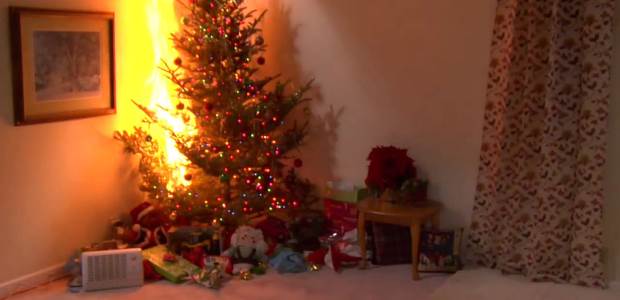
Preventing Christmas Tree Fires
U.S. fire departments responded to an estimated average of 200 home structure fires per year that began with Christmas trees in 2011-2015, according to NFPA.
Chestnuts may be roasting on open fires during this holiday season -- but Christmas trees definitely should not be burning. Unfortunately, some do, every year.
The National Fire Protection Association reports U.S. fire departments responded to an estimated average of 200 home structure fires per year that began with Christmas trees during 2011-2015, and those fires caused an annual average of six civilian deaths, 16 civilian injuries, and $14.8 million in direct property damage. On average, according to its recent "Home Structure Fires Involving Christmas Trees" report, one of every 32 reported home Christmas tree fires resulted in a death, compared to an average of one death per 143 total reported home fires.
The report says the number of these fires declined significantly in recent years, from 850 in 1980 to 170 in 2014 and 2015.
Electrical failures or malfunctions are factors in 25 percent of Christmas tree fires, and heating equipment is involved in 15 percent of such fires, according to the organization's Fact Sheet. It says in 26 percent of Christmas tree fires and 80 percent of the deaths, some type of heat source, such as a candle or equipment, was too close to the tree.
Forty-two percent of reported home Christmas tree fires occurred in December and 37 percent were reported in January; 37 percent of such fires started in the living room, family room, or den.
The report cites a NIST study that showed one residential sprinkler can prevent flashover and limit fire spread when a dry Christmas tree catches fire. A disproportionate number of Christmas tree fires involve natural trees, and candles started 8 percent of these fires.